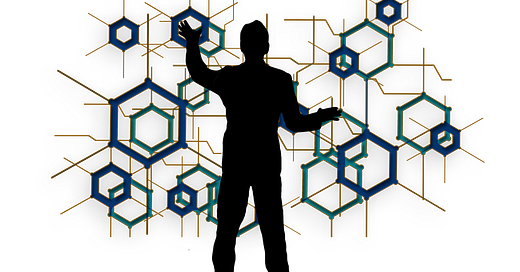Governance Tokens (Part 1)
Governance Tokens are blockchain assets that give decision-making power to their holders within a specific protocol, platform, or application.
Governance Tokens are blockchain assets that give decision-making power to their holders within a specific protocol, platform, or application.
Example: MakerDAO enables MKR token holders to vote on critical parameters of the Maker system, such as stability fees.
Governance Tokens are not an ownership stake in a traditional sense. Instead, they represent a form of stakeholder power. By holding and potentially staking these tokens, users can influence the direction of the protocol.
Use cases of Governance Tokens
1. Decentralized Decision Making
Governance Tokens remove central authority from decision-making processes and empower the community to have a say in the direction and policies of the protocol.
Token holders can submit proposals or vote on existing ones. These can relate to protocol changes, upgrades, fee structures, or even project directions.
The idea is to harness collective intelligence and insights from a wide range of stakeholders.
2. Incentive Alignment
Governance Tokens align the interests of the platform developers, users, and stakeholders, ensuring that everyone works towards the overall success and sustainability of the platform.
By having a stake (or investment) in the form of governance tokens, holders are incentivized to make decisions that are beneficial for the long-term health and success of the platform.
3. Platform Development & Upgrades
Proposals for upgrades or changes to the platform can be made by Governance Token holders. Once a proposal garners enough support (often through a voting mechanism), developers can implement these changes.
4. Resource Allocation & Financial Decision Making
In many decentralized platforms, there are treasuries or pools of funds reserved for platform development, marketing, grants, etc. Governance Tokens can be used to vote on how and where these funds should be utilized.
5. Access to Exclusive Features or Benefits
Active participants and holders of governance tokens can be awarded exclusive benefits that are not available to regular users.
Some platforms offer early access to new features, lower transaction fees, or other perks to Governance Token holders.
6. Delegation & Representation
Governance Token holders who may not have the expertise or time to participate actively in governance can delegate their tokens (and hence, voting power) to trusted representatives or experts.
Governance Mechanisms
1. On-chain Voting
This mechanism involves recording votes directly on the blockchain. Each vote is a transaction, and the outcome is transparently and immutably stored.
Advantages: High transparency, tamper-proof, and easy verification.
Challenges: This can be expensive due to transaction fees, and may not be ideal for rapid or minor decisions.
2. Off-chain Voting
Voting occurs outside the blockchain, often through traditional means or dedicated platforms, and the result might be recorded on-chain.
Advantages: More flexible, often faster, and can be more cost-effective.
Challenges: Might require trust in a third party and lacks the same level of transparency as on-chain voting.
3. Delegated Voting
Token holders can delegate their voting power to a representative, who votes on their behalf.
Advantages: This can lead to more informed decisions if delegates are experts or more knowledgeable. Useful for those who might not have the time or expertise to vote on every issue.
Challenges: Centralization risk if too many users delegate to a single entity. Can also lead to voter apathy.
4. Quadratic Voting
A system where participants vote using tokens or credits. The cost of casting multiple votes for an issue increases quadratically, allowing minority voices to have a significant say.
Advantages: Aims to balance the power of large holders with the broader interests of the community. Gives weight to the intensity of preferences.
Challenges: Complexity in implementation. Requires careful design to prevent manipulation.
5. Token-based Signalling
Token holders signify their preference or stance on an issue without a binding commitment. It's like a non-binding referendum, gauging community sentiment.
Advantages: Offers a quick way to understand community preferences without the need for formal votes. Can guide decision-makers on the direction to take.
Challenges: Non-binding, so no guarantee that signaled preferences will be acted upon. Can be influenced by short-term traders or those without a long-term stake in the ecosystem.



